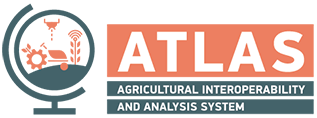
AGROSPHERE INSTITUTE
The Agrosphere Institute (IBG-3), Forschungszentrum Jülich, aims at improving our understanding of hydrological and biogeochemical processes in terrestrial systems with a specific focus on agricultural and soil-groundwater systems. Its research serves as a basis for the development of management strategies for a sustainable use of terrestrial resources such as water and soil and for the quantification of the effect of climate and land use changes on the dynamics and adaptation of terrestrial systems.
The activities are organised in three major research areas: modelling of terrestrial systems, environmental processes and technologies, and terrestrial biogeochemistry, modelling terrestrial systems addresses flow and transport processes in soil-plant-atmosphere systems, the integrated modelling of subsurface, land surface, biosphere and atmosphere interactions using high performance scientific computing and the management and modelling of catchment scale systems. Environmental processes and technologies focus on the development of hydrogeophysical methods to characterise subsurface processes and to improve our understanding of hydrological processes from lab to catchment scale. In addition, lab scale to field scale experiments of transport processes of geogenic and anthropogenic substances are conducted and combined with mathematical modelling. Finally, terrestrial biogeochemistry addresses nutrient cycling and dynamics in natural and agroecosystems. It studies the exchange of trace gases between the soil-plant and atmosphere using stable isotope techniques as well as biogeochemical processes occurring at interfaces in the soil system.
For more details visit their website.
ROLE WITHIN THE PROJECT: IBG-3 will verify the measurement accuracy of the cosmic ray neutron sensing (CRNS) method in a drip-irrigated field in the Pinios Hydrological Observatory and whether it can be used to schedule irrigation under the given cultivation. The measurement data will be combined with the land surface-subsurface model CLM-ParFlow which simulates subsurface soil moisture contents, evapotranspiration and also drought stress. In addition, methods for regular plausibility checks and effective tools for automated data storage and archiving will be developed using standard protocols (OGC web services).

